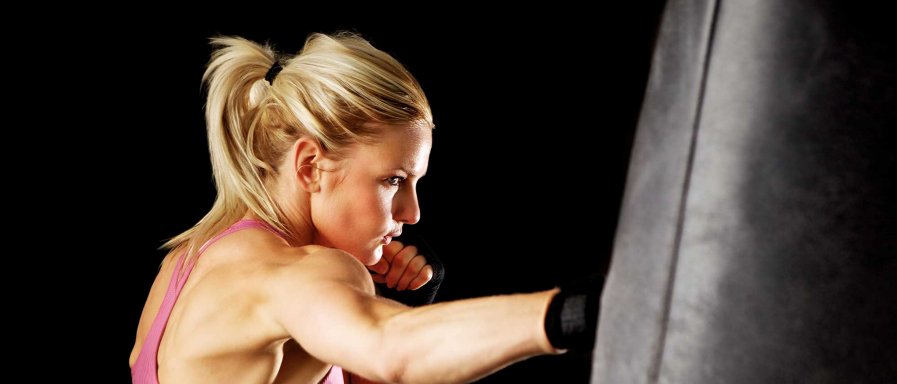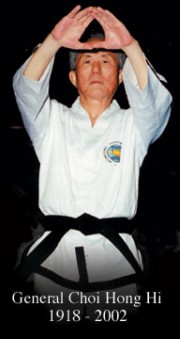| |
You'll find many accounts of the
history of the martial arts in books, articles
and on the web. Often they are biased in favor
of the particular style of the author—for
example some Tae Kwon Do histories claim that
their art is "over 2000 years old." Although
Korea has a long history of martial practice, as
do other Asian nations, TKD is actually a style
created in the 1950s after the Korean War.
So, it is hard to piece together a truly
accurate historical account because victorious
societies and powerful organizations usually
write their histories to put themselves in the
best light. Still, we can try to present a
simple picture of the development of the martial
arts over the centuries.
China
China is by most considered the birthplace
of martial arts however; records are rare
so determining this to be fact is relatively
impossible. The most popular story centers on an
Indian Buddhist monk named Bodhidharma (Daruma
in Japanese) who is said to have traveled to
China around 525 AD and began teaching a system
of physical and mental exercises at the Shaolin
Monastery. Over the decades many traveling monks
followed his lead and introduced their own
divisions of this original art into other
countries further modifying the arts into
today’s differing systems.
Japan/Okinawa
Okinawa is
actually a group of islands off the coast of
Japan. Karate was born here in the 17th century
from the influence of those Chinese monks. The
fighting arts were originally known simply as
"Okinawa Te," or "hand," but soon they became
known as "China-hand" or "kara-te." Some of the
Okinawan schools added use of farm implements as
weapons since the government had outlawed use of
swords and knives. So the sai, nunchaku and bo
became part of the present Okinawan curriculum.
Because Japan had occupied the islands for
hundreds of years before finally annexing them
in 1856, Karate had no doubt been taken to the
Japanese mainland. However empty-hand and simple
weapon fighting was considered lower-class by
the highly trained samurai with their elaborate
sword skills.
About 1916 an Okinawan Karate
teacher named Gichin Funakoshi traveled to Japan
to demonstrate his art. It is said that he is
the one who changed the translation of kara-te
to "empty hand" in order to make the art more
acceptable to the Japanese. His school became
known as Shotokan and he awarded the very first
karate black belts in 1922. Funakoshi is often
credited as being the "father" of modern Karate.
Today there are many styles of both Japanese and
Okinawan Karate.
Generally the Okinawan
styles are softer and more traditional in their
approach and the Japanese schools are more
sport-oriented.
Korea
As we said, the roots of Tae Kwon Do reach
far back into ancient history. 1300 years ago
the Hwa Rang warriors (young soldiers often
compared to the Japanese Samurai) developed an
unarmed fighting art known as Subak and later,
Taekyon. The fighting arts eventually became
less popular and at one point were actually
banned and survived only by being practiced in
secret.
In 1910 Japan overran Korea and
outlawed Korean customs and martial arts. Many
Koreans left the country to try and find better
conditions in China or even in Japan itself.
They were exposed to other fighting arts such as
Chinese Kung Fu and Japanese Ju-Jutsu and
Karate. At the end of World War II Korea was
liberated from the Japanese occupation by the
USA and her Allies. Thousands came back home to
openly practice both the traditional Korean
systems and the other Asian styles creating many
new martial arts schools throughout Korea.
In 1955 the leading masters met
to try and unify the many schools under one
name. Korean army general Choi Hong Hi suggested
the name Tae Kwon Do (the "way of kicking and
punching") and it was eventually accepted by
many Korean teachers. Some schools refused
however and continued to practice under their
previous names—most notably Tang Soo Do (the
"way of the China hand in Korean).
The
late General Choi (pronounced chay) also made up
the first Tae Kwon Do training patterns or
hyungs (also known by the Japanese term, kata).
Coming
to the USA
In
1948, Robert Trias, a returning American
serviceman who had studied Karate in Okinawa
started the first Karate class in the USA in
Phoenix, Arizona.
In 1956, a South Korean
named Jhoon Rhee arrived in Texas and introduced
America to the Korean martial arts. He taught
the aforementioned Tang Soo Do. But since no one
in this country had ever heard of the Korean
arts Mr. Rhee used the more popular name Karate.
(This is one reason the Korean arts became known
as "Korean Karate.") Mr. Rhee soon started using
the term Tae Kwon Do and in 1962 moved to
Washington D.C. where he still teaches and is
recognized as the "Father of American Tae Kwon
Do."
Rhee's first American black belt was
a Texan named Allen R. Steen who built the Lone
Star state into one of the first strongholds of
Karate in the USA. Steen opened the first Karate
school in Texas in 1962 in the Snider Village
shopping center close to SMU in Dallas. Mr.
Steen's reputation as a champion and instructor
of champions in the '60s and '70s was rivaled
only by California's Chuck Norris (whom Steen
defeated to earn the 1966 International Karate
Championships.)
The Americanization of the Martial Arts
Steen, Norris and the other pioneers of
American Karate did what the Japanese and
Koreans themselves had done only a few years
before. They took bits and pieces of different
styles and molded them into a uniquely American
system of martial art.
Not only were
there different groups springing up in the USA
in the 1960s and early '70s but in South Korea
as well. General Choi's International TKD
Federation (known as the ITF) was forced to
leave South Korea by his political rivals. The
World TKD Federation (WTF) replaced the ITF in
South Korea and they devised a new set of
training patterns to distinguish themselves from
the old organization. Although the WTF is the
group officially recognized by the South Korean
government, many instructors in America do not
belong to it. Through this government-sponsored
organization Tae Kwon Do has been included as a
permanent event in the 2000 Olympics.
To make Tae Kwon Do different
from Karate, the South Korean/Olympic-style
(often referred to as "kuki taekwondo" has
de-emphasized hand techniques to feature kicks —
especially head-high kicks. In fact punches to
the head are not allowed in Olympic Tae Kwon Do.
Most American stylists however, prefer a more
balanced and realistic approach with an equal
combination of hands and feet. In fact, American
"open" tournament rules allow for hand and foot
strikes to all target areas.
Americans
often just call their approach "American Karate"
whether they come from a Chinese, Okinawan,
Japanese or Korean background. While it is
confusing to have so many different kinds of
Karate and Tae Kwon Do it does promote new ideas
and philosophies as all of the martial arts
continue to develop both in America as well as
back in Asia.
Texas Karate Do Specifically
Texas Karate
Do specifically comes from General Choi’s ITF
branch off of modern Karate, meaning that our
kata’s (forms in English) are traditional ITF or
Tae Kwon Do forms. However, in keeping with the
tradition of the ever evolving martial arts
styles our school has also developed its own
version of American Karate. We incorporate
Kenpo, Tae Kwon Do, Judo, Hapkido, and various
other arts into our style in order to create our
own version of American Karate. We like many
American Schools however, are still very proud
of our deep and distinct roots in General Choi’s
Tae Kwon Do.
|





















